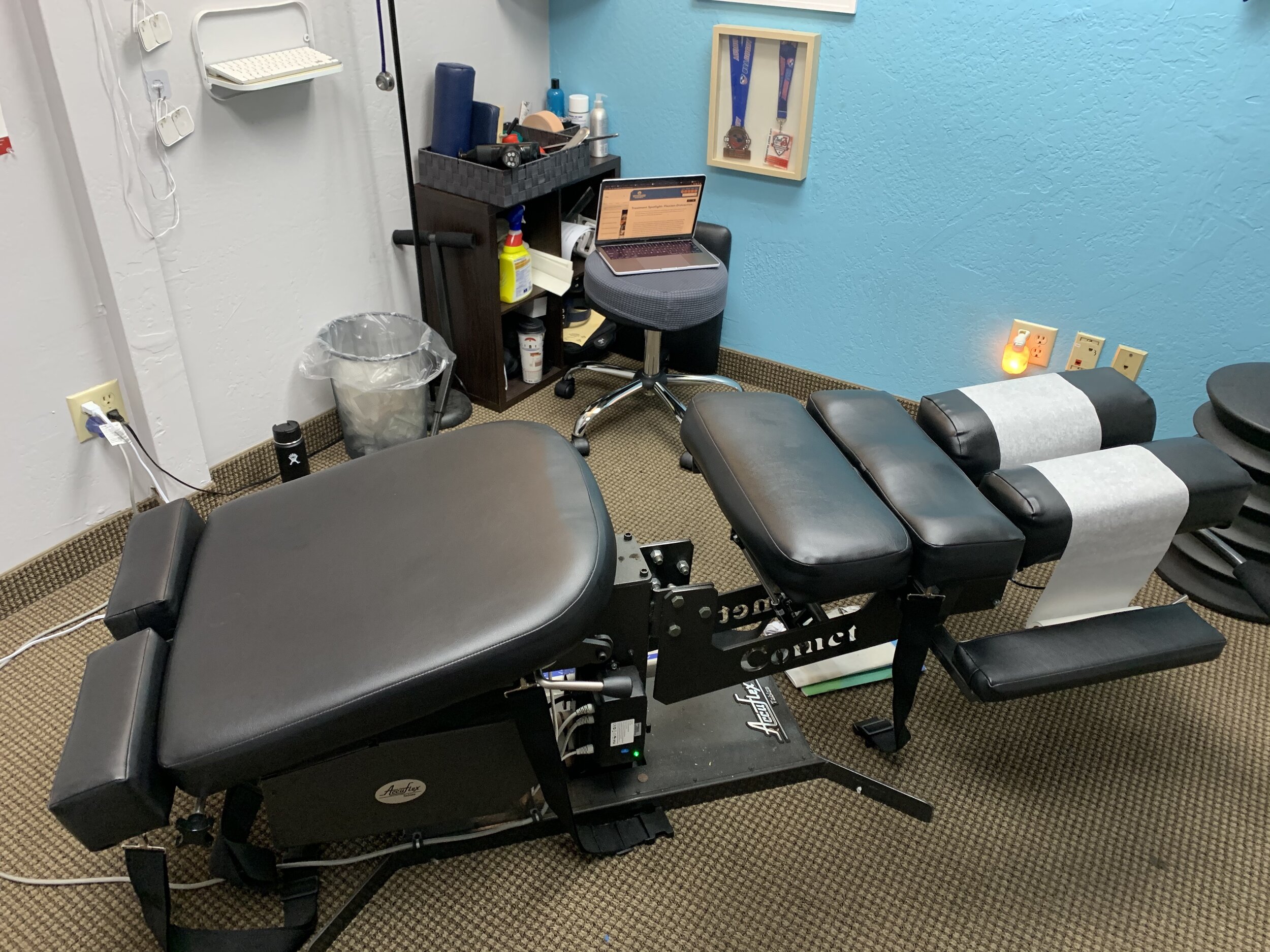Treatment Spotlight: Flexion-Distraction
Hello again and welcome to another informative weekly blog post! Today we’ll be looking at Flexion-Distraction Therapy, one of the main tools in our bag of techniques and its efficacy in practice for relieving a variety of conditions. Let’s get started then!
As we’ve covered in one of our previous blog posts, the spine is a delicate highway that is responsible for numerous muscular and ligamentous connections as well as protection for the vulnerable nervous system. Overtime, lifestyle and posture can affect our back which in turn can affect our nervous system and cause numerous problems and unwanted pain. Luckily, Flexion-Distraction therapy helps to address this problem and more. Flexion-Distraction Therapy is the combination of spinal manipulations on a segmented table. The concept itself is fairly simple; the segmented table helps move your body in ways that open up sections of your body and spine that are normally difficult to position you in. With those positions opened up, we can then utilize manipulations to ‘open up’ or ‘free’ your body so that it can move and ultimately function better. Since the table’s segments can also allow some portions of the body to drop, gravity can be used in these instances to help enhance treatment and realign your spine.
So what does ‘opening up’ or ‘freeing’ your back actually do for you? What if you’re completely healthy? This technique is versatile and works not just for certain conditions, but for a variety of bodily maintenance as well. Spinal stenosis is a condition of narrowed spaces in your spine where your spinal cord runs through. This condition affects a large portion of the population that are over fifty, but it can also occur in some cases in younger patients. Flexion-Distraction therapy is a very effective and medication-free treatment for relieving pain and associated symptoms of this condition. Other related conditions that this technique helps to address pain and pressure on the disks in your spine, decrease bulging in herniated disks, and improve joint range of motion and mobility.
From a maintenance perspective, there are also a variety of benefits that one can receive from this type of treat as well. Some of these benefits include relief from stiffness, helps to treat low back pain, decrease in neck pain and or headaches, relieve pain and numbness, and posture improvement. Suffice to say, this is one of the most versatile tools in our arsenal and works well for a variety of conditions. Of course, this isn’t a comprehensive list. As always, this isn’t an end all type of treatment and it should be supplemented with your usual active routine, proper diet conducive to your lifestyle, and exercises.
Here’s the flexion-distraction table we use in our office at the stationary, neutral position. This position would orient the patient similarly to any flat table.
Here we see the fully flexed position of the table. This creates the “gapping” or opening of spinal joints in the low back as mentioned above.
This is the fully distracted position of the table. This positioning adds a low-level traction component to the technique.
Do you think you could benefit from this treatment or have any lingering questions about what else Flexion-Distraction therapy can treat? Then feel free to ask us about it next time you see us or shoot us a message!



